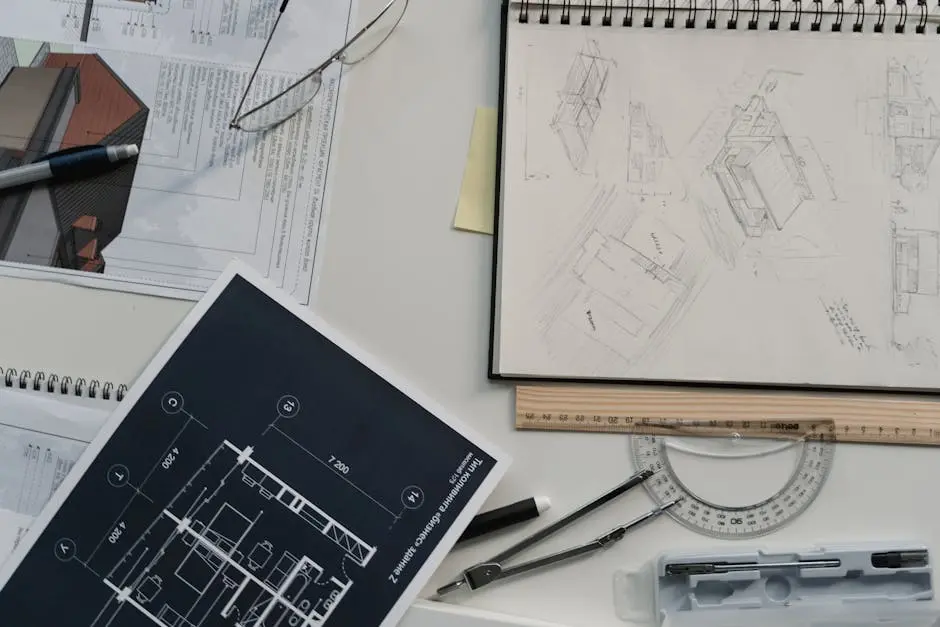Creating a stunning website is essential for making a great first impression. However, it’s easy to fall into the trap of common graphic design mistakes that can undermine your efforts. In this blog, we’ll walk through some of the top blunders you should steer clear of, ensuring your site not only looks amazing but also provides a great user experience.
1. Neglecting Mobile Responsiveness
In today’s mobile-driven world, failing to optimize your website for smartphones and tablets can lead to a significant loss in potential visitors. Ensure that your design adapts to various screen sizes seamlessly. Visitors on mobile devices should have an experience that is just as rich and engaging as those on desktops. Remember, approximately half of all web traffic now comes from mobile devices, and if your site is not mobile-friendly, you risk alienating a large segment of your audience. By utilizing responsive design principles, you can create a site that adjusts and looks fantastic no matter the device.
2. Overcomplicating the Layout
A cluttered layout can confuse visitors and detract from the message you want to convey. Aim for a clean and simple design that guides users to your most important content. One effective strategy is to use a grid system that provides structure and organization; this helps visitors find what they’re looking for quickly. Additionally, consider the use of whitespace, which not only allows your content to breathe but also enhances visual hierarchy. By keeping your layout intuitive, you create a seamless browsing experience that will keep users engaged.
Another aspect to consider is the flow of information. Think about how users will move from one section to another and devise a logical progression that makes sense. This means ensuring that important elements like navigation and calls to action are easily accessible. The objective is to create an effortless journey through your site, where each click leads to meaningful content rather than unnecessary distractions.
3. Ignoring Color Contrast
Using colors that blend together can make text hard to read and important elements hard to distinguish. Checking your color palette to ensure good contrast for readability is essential. High-contrast colors not only enhance visibility but also draw attention to critical areas of your website. For instance, using a dark text on a light background is more accessible and user-friendly. Conversely, light text on a dark background can work beautifully when done right, but it must still meet key contrast standards.
Beyond readability, color contrast can evoke emotions and influence actions. It’s powerful—consider how you want your audience to feel when they visit your website. A well-chosen color scheme can lead users to feel calm, excited, or even motivated to act. Tools like the WebAIM Contrast Checker can help ensure that your colors not only look good but are functional as well.
4. Using Too Many Fonts
While creativity is important, overusing different fonts can disrupt your site’s visual harmony. Stick to a few complementary fonts to maintain a cohesive look. Typically, using two to three font families is ideal; this allows for variety in headlines, subheadings, and body text without overwhelming the user. Choose fonts that not only fit your brand’s personality but are also legible at different sizes, as clarity is crucial in effective communication.
Additionally, pay attention to spacing and sizing. A consistent typographic scale enhances readability and provides a guide for the eye, helping visitors navigate text-heavy sections with ease. With careful font selection and structure, your website can present an organized, professional appearance that resonates with users.
5. Disregarding Visual Hierarchy
Proper visual hierarchy helps users navigate your website intuitively. Use size, color, and placement strategically to guide users’ attention to key information and calls to action. For instance, larger headlines naturally draw more focus, and you can support these elements with color and contrast to emphasize critical points. But don’t forget about the importance of alignment; well-aligned elements can help create a more polished, professional look.
A common tactic is to highlight your primary calls to action with contrasting colors or buttons. This not only helps them stand out but also encourages user interaction and shapes the user experience. Overall, think of visual hierarchy as a roadmap: it helps visitors arrive at their desired destination without feeling lost.
6. Forgetting About White Space
White space is not wasted space; it is vital for a clean design. Adequate spacing can make your content more digestible and create a more pleasant user experience. When used effectively, white space acts as a strategic tool that enhances readability and navigability. It allows each element on your page to stand out and prevents your website from feeling cramped.
Moreover, white space can create a sense of elegance and sophistication in your design. Whether through margins, padding, or line spacing, it’s essential to incorporate it into your layout thoughtfully. Finding the right balance of content and empty space can lead to a more enjoyable browsing experience and a higher chance of users returning for more.
7. Using Low-Quality Images
Blurry or pixelated images can diminish the credibility of your site. Invest in high-quality images that elevate your design and reflect your brand’s standards. Not only do good images catch the user’s eye, but they also communicate professionalism and attention to detail. Make sure the images you choose not only fit your brand’s aesthetic but also complement your overall design.
Consider using images with a consistent style or filter to create a more cohesive look across your site. And don’t forget about optimization! Large image files can slow down your site’s loading speed, which negatively impacts user experience. Websites like Unsplash and Pexels offer free, high-resolution images that can be invaluable resources for designers on a budget.
Moreover, white space can create a sense of elegance and sophistication in your design. Whether through margins, padding, or line spacing, it’s essential to incorporate it into your layout thoughtfully. Finding the right balance of content and empty space can lead to a more enjoyable browsing experience and a higher chance of users returning for more.
8. Skipping User Testing
Designing a website without user input can lead to pitfalls. Always seek feedback from real users to understand what works, what doesn’t, and how you can improve. User testing doesn’t have to be complicated; even informal feedback sessions can provide valuable insights. By observing how users interact with your site, you can identify areas that confuse or frustrate them.
Moreover, consider implementing A/B testing to explore different design options and layouts. This allows you to make data-driven decisions, ensuring that your website meets user expectations while also aligning with your goals. Remember, a website that works beautifully for real users is a significant factor in its long-term success.
9. Ignoring Accessibility Standards
A website that is not accessible to all users, including those with disabilities, misses out on a significant audience. Incorporate accessibility best practices to create an inclusive experience. This includes ensuring that your website is navigable via keyboard and that images have descriptive alt text. By adhering to Web Content Accessibility Guidelines (WCAG), you can create an environment that welcomes everyone.
Beyond the ethical reasons, making your website accessible can also benefit you in terms of reach and audience engagement. By showcasing your commitment to accessibility, you can build a loyal following that appreciates your efforts to include everyone in the conversation. Making your site inclusive isn’t just a good practice; it’s essential!
10. Overloading with Animations
While animations can enhance your design, too many can be distracting and overwhelming. Use animations sparingly and only when they add value to the user experience. Subtle animations can guide users’ focus and create a more dynamic interaction with your website, but overdoing it can lead to frustration.
When utilizing animations, think about their purpose. Are they meant to attract attention to a call to action or to simply entertain? Just ensure they don’t detract from the website’s main goals. By being intentional with your use of animation, you can create a more professional and streamlined user experience.
11. Not Optimizing for SEO
Even the best designs need to be discoverable. Integrate SEO best practices into your graphic design to ensure your website ranks well in search engine results. This begins with using properly tagged images, optimizing loading speeds, and ensuring your site is structured in a way that makes it easy for search engines to crawl.
Additionally, consider your content strategy. High-quality content enriched with relevant keywords not only fulfills user needs but also boosts your site’s visibility. A well-optimized site will not only attract more visitors but will also enhance the overall user experience, since useful content and navigation will allow users to find what they need quickly.
12. Failing to Update Regularly
An outdated website can make your brand appear stale. Regularly refresh your design and content to keep your site relevant and engaging. Whether it’s updating product images or adding new blog posts, keeping content fresh is key to retaining visitor interest.
In addition, consider the technology behind your website. Browser updates and shifts in best practices mean that what worked beautifully last year might not fly today. Regular updates not only improve aesthetics but also functionality, leading to a much smoother experience for all users. By prioritizing updates, you show your audience that you care about their experience and that your business adapts with the times.


